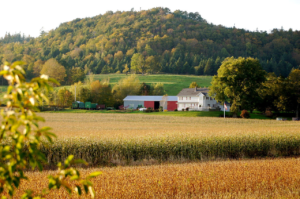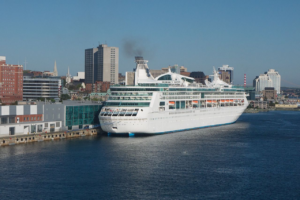
Nova Scotia is one of the thirteen provinces and territories of Canada. It is one of the three Maritime provinces and one of the four Atlantic provinces. Nova Scotia is Latin for “New Scotland”. Most of the population are native English-speakers. The province’s population reached 1 million in December 2021.
Nova Scotia’s capital and largest city is Halifax, which today is home to about 45 percent of the province’s population. Halifax is the thirteenth-largest census metropolitan area in Canada, the largest city in Atlantic Canada, and Canada’s second-largest coastal city after Vancouver.
Nova Scotia is the most populous of Canada’s four Atlantic provinces. It is the country’s second-most densely populated province and second-smallest province by area, both after Prince Edward Island.
The peninsula that makes up Nova Scotia’s mainland is connected to the rest of North America by the Isthmus of Chignecto, on which the province’s land border with New Brunswick is located. The province borders the Bay of Fundy and Gulf of Maine to the west and the Atlantic Ocean to the south and east, and is separated from Prince Edward Island and the island of Newfoundland by the Northumberland and Cabot straits, respectively.
Halifax City Council
Nova Scotia lies in the mid-temperate zone and, although the province is almost surrounded by water, the climate is closer to continental climate rather than maritime. The winter and summer temperature extremes of the continental climate are moderated by the ocean. However, winters are cold enough to be classified as continental—still being nearer the freezing point than inland areas to the west. The Nova Scotia climate is in many ways similar to the central Baltic Sea coast in Northern Europe, only wetter and snowier.

Photo: A farm in Grafton
The province is the world’s largest exporter of Christmas trees, lobster, gypsum, and wild berries. Its export value of fish exceeds $1 billion, and fish products are received by 90 countries around the world.
Mining, especially of gypsum and salt and to a lesser extent silica, peat and barite, is also a significant sector. Since 1991, offshore oil and gas has become an important part of the economy, although production and revenue are now declining. However, agriculture remains an important sector in the province, particularly in the Annapolis Valley.
Nova Scotia’s defense and aerospace sector generates approximately $500 million in revenues and contributes about $1.5 billion to the provincial economy each year.
Nova Scotia has the fourth-largest film industry in Canada hosting over 100 productions yearly, more than half of which are the products of international film and television producers.
The province also boasts a rapidly developing Information & Communication Technology (ICT) sector which consists of over 500 companies, and employs roughly 15,000 people.

Photo: A cruise ship docked at the Port of Halifax
The Nova Scotia tourism industry includes more than 6,500 direct businesses, supporting nearly 40,000 jobs. In 2010, the Port of Halifax received 261,000 passengers and Sydney 69,000. This industry contributes approximately $1.3 billion annually to the economy. Nova Scotia’s tourism industry showcases Nova Scotia’s culture, scenery and coastline. Nova Scotia has many museums reflecting its ethnic heritage.
The province has 87 National Historic Sites of Canada, including the Habitation at Port-Royal, the Fortress of Louisburg and Citadel Hill (Fort George) in Halifax. Nova Scotia has two national parks, Kejimkujik and Cape Breton Highlands, and many other protected areas. The Bay of Fundy has the highest tidal range in the world, and the iconic Peggy’s Cove is internationally recognized and receives 600,000-plus visitors a year. Old Town Lunenburg is a port town on the South Shore that was declared a UNESCO World Heritage Site.
Acadian Skies and Mi’kmaq Lands is a starlight reserve in southwestern Nova Scotia. It is the first certified UNESCO-Starlight Tourist Destination. Starlight tourist destinations are locations that offer conditions for observations of stars which are protected from light pollution.

Photo: Université Sainte-Anne is a Francophone university situated in Pointe-de-l’Église.
Nova Scotia has more than 450 public schools for children. The public system offers primary to Grade 12. There are also private schools in the province. Public education is administered by seven regional school boards, responsible primarily for English instruction and French immersion, and also province-wide by the Conseil Scolaire Acadien Provincial, which administers French instruction to students whose primary language is French.
Ten universities are also situated in Nova Scotia, including Dalhousie University, University of King’s College, Saint Mary’s University, Mount Saint Vincent University, NSCAD University, Acadia University, Université Sainte-Anne, Saint Francis Xavier University, Cape Breton University and the Atlantic School of Theology.
The Nova Scotia Community College system has 13 campuses around the province. With a focus on training and education, the college was established in 1988 by amalgamating the province’s former vocational schools. In addition to the provincial community college system, there are more than 90 registered private colleges in Nova Scotia.
Source of the majority of Photos and Content of this page: Wikipedia
It is your duty in life to save your dream
AMEDEO MODIGLIANI